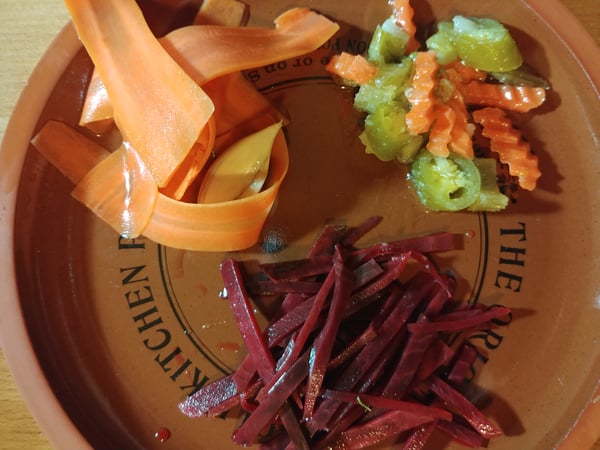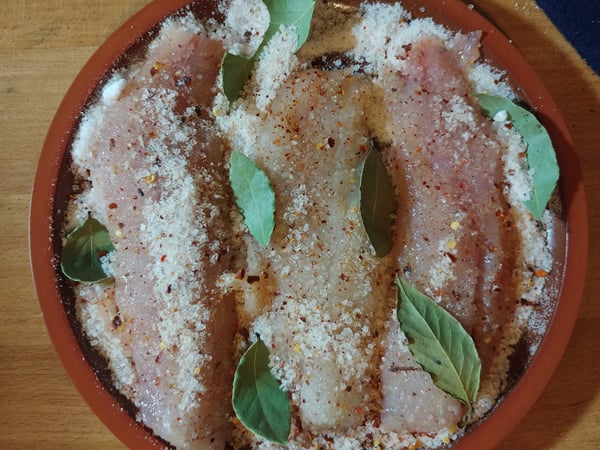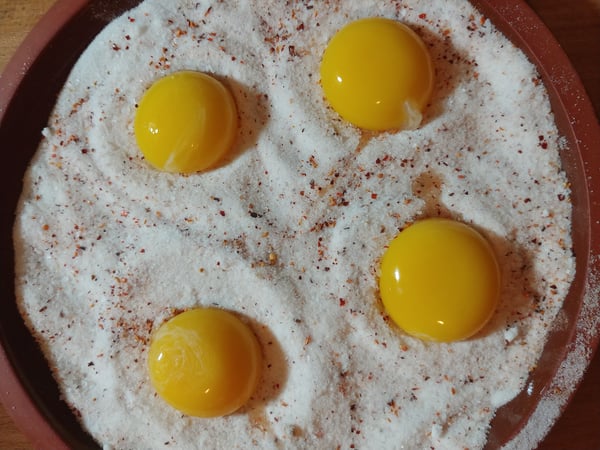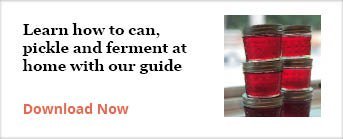Food waste is a huge issue in our society, and can be a huge issue for your pocketbook. Finding out what to do with those leftover veggies or extra filet of salmon can sometimes be difficult for home cooks, but there is a way to save you money and add delicious foods to your fridge. Food preservation can be a daunting task, even for the most seasoned home cooks. I know when I think of the term, thoughts spring to mind of my aunt's elaborate blueberry jam and canning making process, which takes up a considerable portion of her time each September. However, there are far easier ways to make your food last a little longer at home. Most of these methods can be completed in less than an hour, and can drastically lengthen the amount of time food keeps in your fridge, while opening up a plethora of in-home culinary opportunities.
Quick Pickling
The first method is one we all know and love: pickling, or in this case, quick pickling. While there are many different ways to pickle vegetables, quick pickles are by far the simplest and in my opinion, have the most applications for home cooks. The downside to these pickles is that they are not shelf stable like the usual jarred dill pickles, but all this means is you will have to keep them in an airtight container in your refrigerator. They can last a month or more there, depending on what vegetables you decide to pickle.

Plate of homemade pickles
All you have to do is take vinegar, water and sugar, bring them to a boil in a saucepan, and pour the hot liquid (also known as a brine) over the vegetables you decide to pickle. Different ratios of ingredients in the brine will create pickles that fall in different places on the sweet-to-tart meter, but I find a good all-purpose ratio is 3 parts water, 2 parts vinegar, and one part sugar. Of course, experimentation with that ratio is encouraged, as is adding spices to the brine and using any and all veggies, although I do find vegetables with an innate crunchiness work particularly well (e.g onions, carrots, celery). If you want an introduction to pickling at home, I would suggest The Chopping Block's at Canning and Preserving class which will return in warmer months. In the meantime, check our our Owner/Chef Shelley Young's video on how to quick pickle.
Curing
Pickling is a great way to preserve veggies that you may not be able to eat before they go past their prime, but what about meats or other proteins that might go bad or be forgotten in the back of the freezer? The answer may come from curing. Curing is also a very simple procedure. Simply take sugar, salt, and whatever herbs and spices you wish to infuse into your cured item, apply this mix liberally to what you wish to cure, and stick it in your fridge for a few days (the time will depend on what you are curing and what your desired result is).
The simplest thing to cure at home is fish. It takes very little time to cure and there are many foolproof lox (cured salmon) recipes on the internet.

Curing branzino fish with bay leaves, red pepper flakes and cayenne
But curing doesn't stop there, cured egg yolks make a great addition to any fridge, they become hard, grate like Parmesan cheese and are absolutely delicious, and curing your own pork belly to make bacon or pancetta at home, while more time consuming, is very doable at home. Just be sure to do your research when curing proteins, as time will vary from batch to batch. Also be sure to check them daily, and when the desired texture or flavor is reached, simply take your product out of the cure and rinse it off. At this point, depending on the product, it will last for a week up to a month or so covered in your fridge, ready to liven up your daily cooking.

Curing egg yolks with espelette pepper
Fermentation
The third method of preservation at home is fermentation. Fermentation has been around as long, if not longer than, both of the methods mentioned above, yet it has fallen out of favor in our diets and cooking repertoire, outside of niche ingredients like kimchi and sauerkraut and high-end restaurants. But fermentation is delicious and easy to do at home, from lacto-fermented pickles to homemade vinegars and kombuchas, and these probiotic rich ingredients are delicious, healthy, and trendy.
If interested in this method, definitely research fermentation on your own (my go-to resource is The Noma Guide to Fermentation) and a good place to start is The Chopping Block's free guide Preserving Food: Let's Can, Pickle and Ferment.
Whether you only make a few batches of pickles a year, or if you become like me and keep a fridge stocked with cured goodies and always have something new pickling in the back, I hope you try out preserving some of your food. It truly opens up so many more options when thinking about what to cook for dinner, and it greatly reduces the amount of food you throw away.












